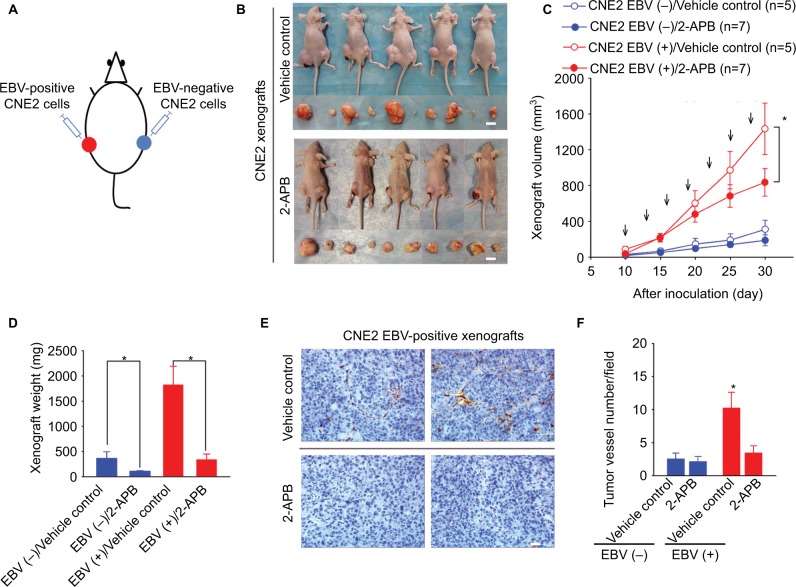Figure 5.
2-APB effectively blunts EBV-promoted xenograft growth and angiogenesis.
Notes: (A) The scheme for the xenograft model in mice. (B) Female BALB/c(nu/nu) mice harboring both EBV-positive and EBV-negative xenografts were treated with (a) PBS (vehicle control) or (b) 2-APB. Representative photographs of the xenograft-bearing mice were captured on Day 30 postinoculation. The xenografts isolated from each mouse are shown in the bottom panel. Scale bar =10 mm. (C) The xenograft volumes were measured every 5 days from Day 10 postinoculation. The mice were intraperitoneally injected every 3 days (arrows) with 2-APB (50 μg/kg; n=7) or control vehicle (PBS; n=5) from the 10th day postinoculation. (D) The weights of the xenografts were determined. (E) The representative immunohistochemical analysis of CD31 in the paraffin-embedded EBV-positive xenograft sections. Scale bar =100 μm; 400× magnification. (F) The tumor-associated angiogenesis was quantified as the vessel numbers per field (400× magnification). The data are presented as the mean ± SEM. (*P<0.05, Student’s t-test or paired t-test).
Abbreviations: 2-APB, 2-aminoethyl diphenylborinate; Ctrl, control; EBV, Epstein–Barr virus.

